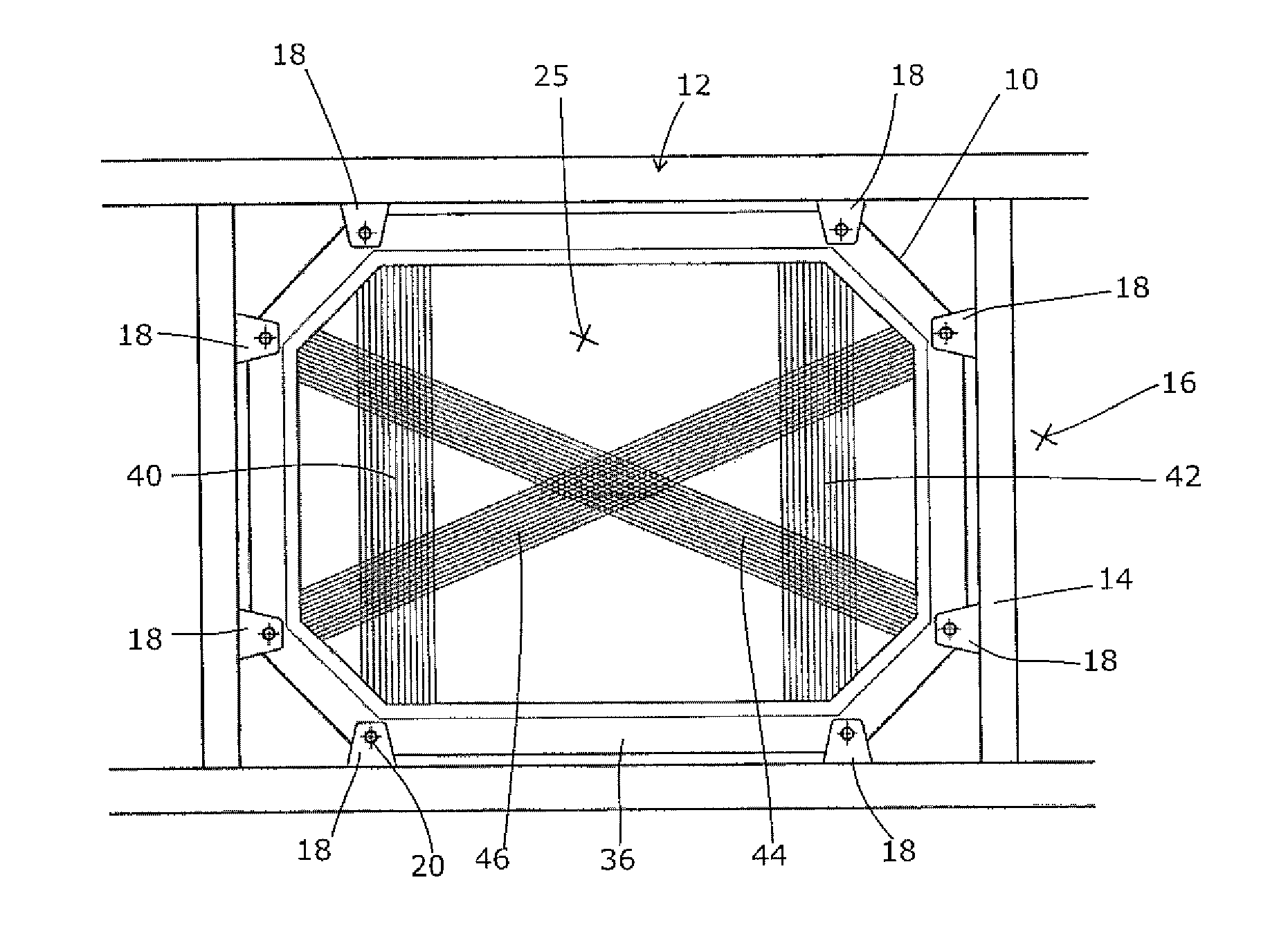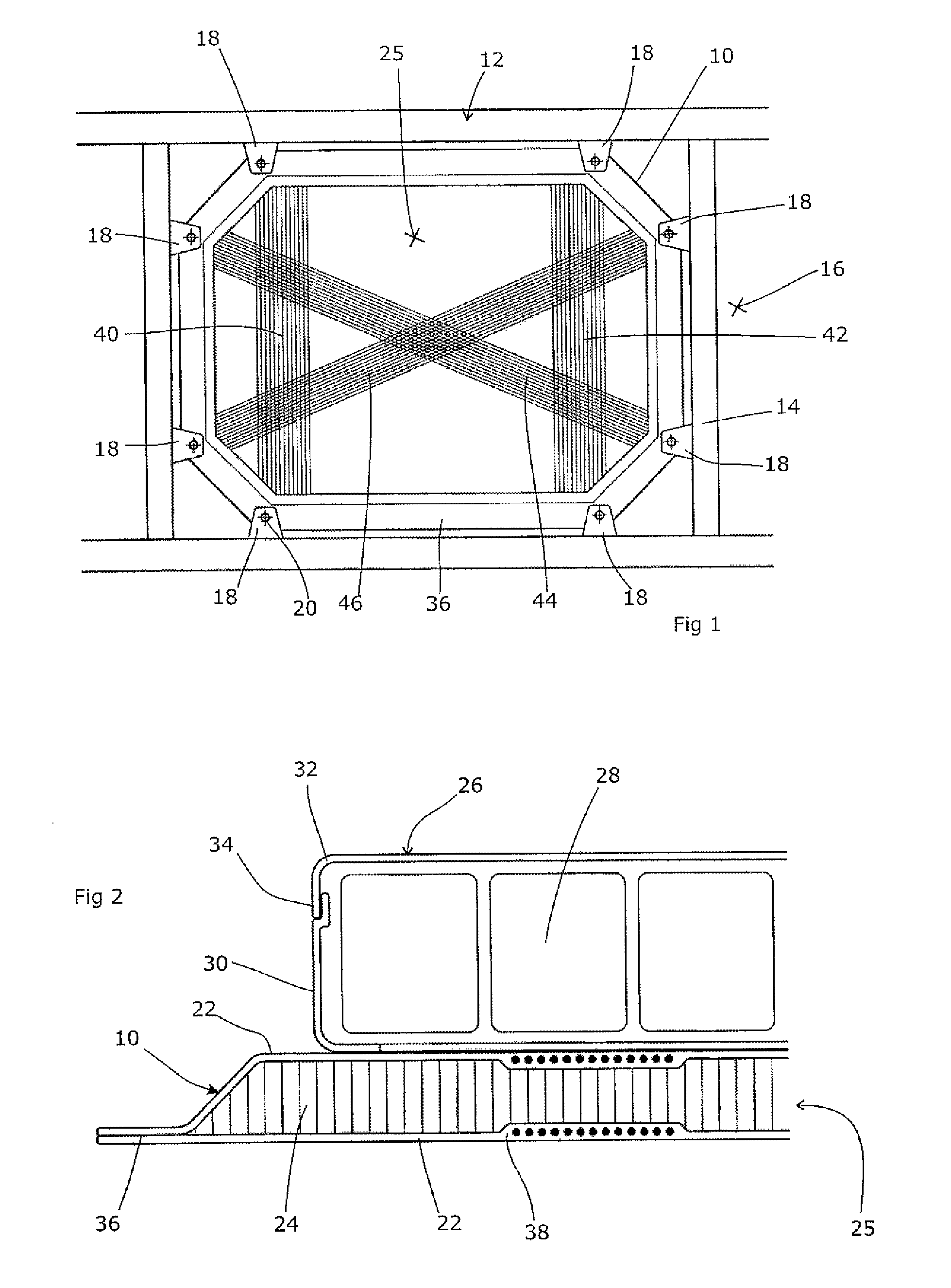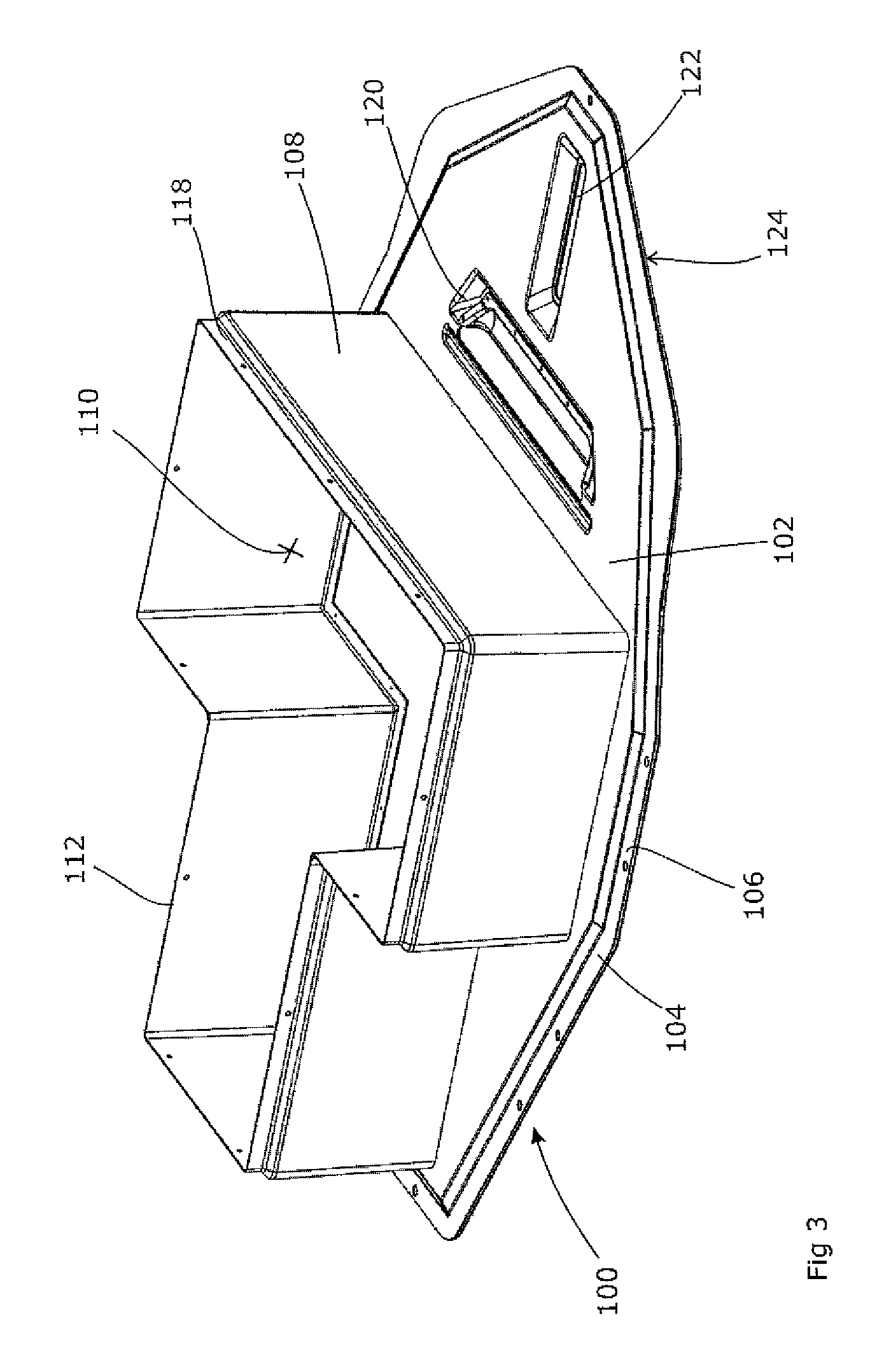Chassis for electric vehicle
a technology for electric vehicles and chassis, applied in the field of chassis, can solve the problems of affecting the design of electric vehicles, affecting the economic viability of electric vehicles, and carries a substantial weight penalty, and achieves the effects of low density, low cost and high rigidity
- Summary
- Abstract
- Description
- Claims
- Application Information
AI Technical Summary
Benefits of technology
Problems solved by technology
Method used
Image
Examples
Embodiment Construction
[0020]FIG. 1 shows the chassis element 10 of the present invention, fitted into a chassis structure 12. The chassis structure as described in our earlier applications WO2009 / 122178 and PCT / GB2010 / 001253, the contents of which are hereby incorporated by reference and to which the skilled reader is referred for a fuller understanding of the present invention. The chassis thus comprises a tubular steel frame 14 onto which is bonded a non-planar composite sheet 16. Mechanical loads are transferred via the steel frame and the composite sheet acting as a single structure. The sheet may include directional fibres in order to improve the crashworthiness of the structure as a whole in specific orientations.
[0021]According to this invention, the chassis 12 is provided with a plurality of attachment points 18. In this case, they are in the form of steel tab sections welded to the steel frame 14 and provided with through-holes 20. The chassis element 10 takes the form more clearly shown in FIG....
PUM
 Login to View More
Login to View More Abstract
Description
Claims
Application Information
 Login to View More
Login to View More - R&D
- Intellectual Property
- Life Sciences
- Materials
- Tech Scout
- Unparalleled Data Quality
- Higher Quality Content
- 60% Fewer Hallucinations
Browse by: Latest US Patents, China's latest patents, Technical Efficacy Thesaurus, Application Domain, Technology Topic, Popular Technical Reports.
© 2025 PatSnap. All rights reserved.Legal|Privacy policy|Modern Slavery Act Transparency Statement|Sitemap|About US| Contact US: help@patsnap.com



